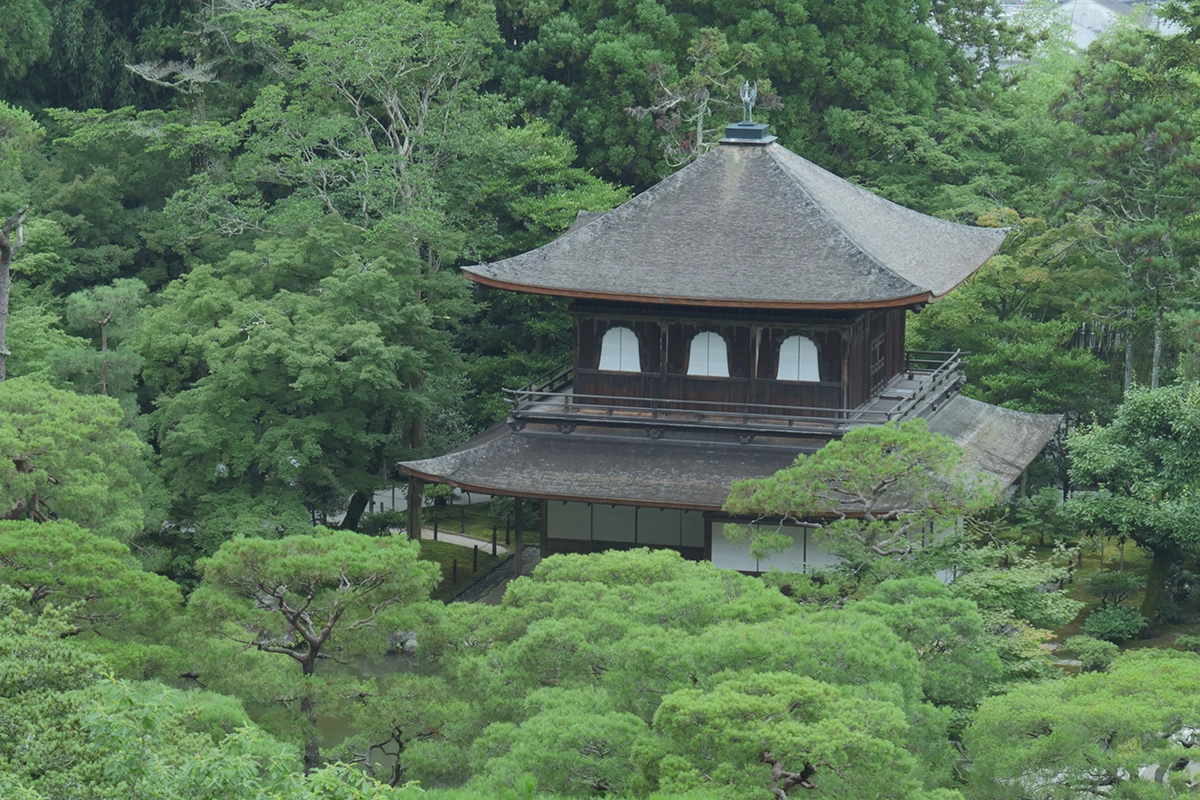
UNESCO World Heritage Site
Call this number
Google Map in English
Google Maps in Japanese
When it comes to Japan’s treasures, Ginkaku-ji, often known as the Silver Pavilion, takes its place alongside its more renowned counterpart, Kinkaku-ji, the Golden Pavilion. Yet, unlike its golden sibling, Ginkaku-ji’s allure lies not in a coat of silver paint – in fact, it doesn’t contain any silver at all, but in its timeless elegance and serene surroundings. When we feel like having a quiet day to immerse ourselves in Kyoto’s history and culture, we often head to the Ginkaku-ji area including Philosopher’s Walk and Nanzen-ji. Check out our article, Two Perfect Days in Kyoto, in which the Day 1 starts at Ginkaku-ji.
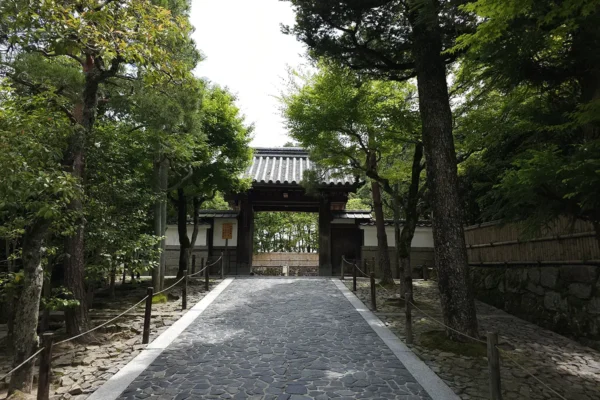
Built as a villa for Shogun Ashikaga Yoshimasa (the 8th shogun of the Ashikaga Shogunate) in the late 15th century, Ginkaku-ji exudes a sense of history and tradition that is palpable from the moment we stepped through its entrance gate. The main building, though lacking in silver adornments, stood as a testament to the refined aesthetic sensibilities of its time. Its graceful architecture, inspired by the elegant simplicity of traditional Japanese design, set the stage for the serene beauty that awaited us within.
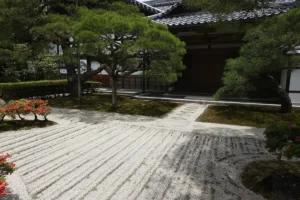
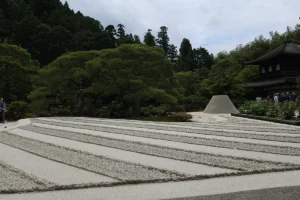
But it was the gardens of Ginkaku-ji that truly stole the show. Designed to evoke a sense of harmony with nature, these meticulously landscaped grounds were a haven of tranquility amidst the hustle and bustle of modern life. The moss garden, in particular, was a sight to behold, with its lush carpets of moss creating an atmosphere of quiet contemplation and peace.
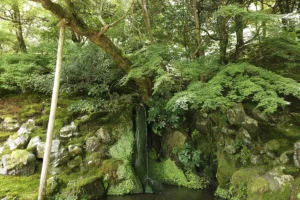
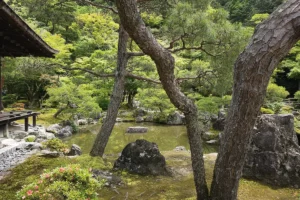
As we wandered through the winding paths of the garden, we encountered a variety of other landscapes, each more enchanting than the last. From the tranquil water garden to the contemplative sand garden, every corner offered a new opportunity for reflection and appreciation of the natural world.
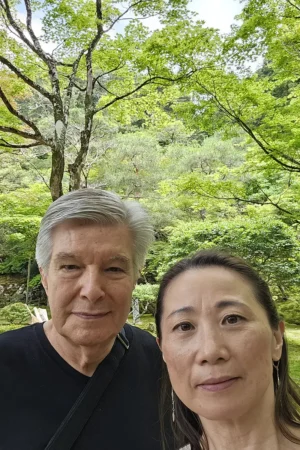
Inside the temple, we found a treasure trove of Japanese art and culture. Calligraphy, paintings, and sculptures adorned the walls, each telling a story of Japan’s rich history and artistic legacy. It was a chance to delve deep into the soul of Japan and uncover the timeless beauty that lay within. We could view some interiors from outside, but we could not go into the building.
But perhaps what made Ginkaku-ji truly special was its ability to transcend the role of a mere tourist attraction. It wasn’t just a place to visit; it was a journey of self-discovery and enlightenment. As we wandered through the gardens and explored the temple’s interiors, we couldn’t help but feel a sense of peace wash over us, as if the weight of the world had been lifted from our shoulders.
The garden continues up a small hill. When I looked back, there was a stunning view of Ginkaku-ji and the closely-built houses in Kyoto. It was definitely a testament to the blend of history and present. To experience the quiet walk in the Ginkaku-ji garden, I highly recommend visiting during weekday mornings.
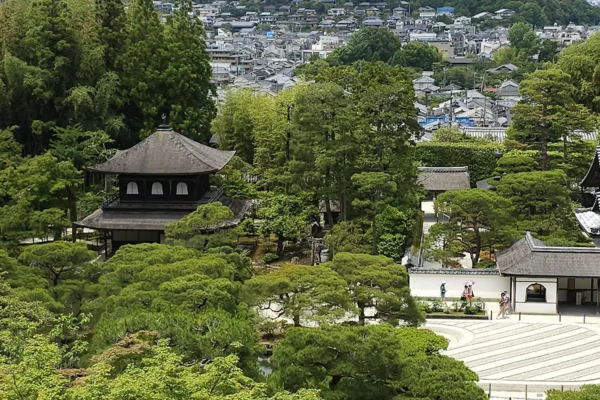
In a world that’s constantly moving, Ginkaku-ji offered us a rare opportunity to pause, reflect, and appreciate the beauty of the present moment. It was a sanctuary where nature and culture converged, reminding us of the importance of finding balance and harmony in our lives.
So, if you find yourself in Kyoto, do yourself a favor and pay a visit to Ginkaku-ji. Allow yourself to be swept away by its beauty, and who knows, you might just find a piece of yourself in the process. The Virtual Tour of the temple is now available to view.
Submission successful. You will receive a confirmation email, shortly.